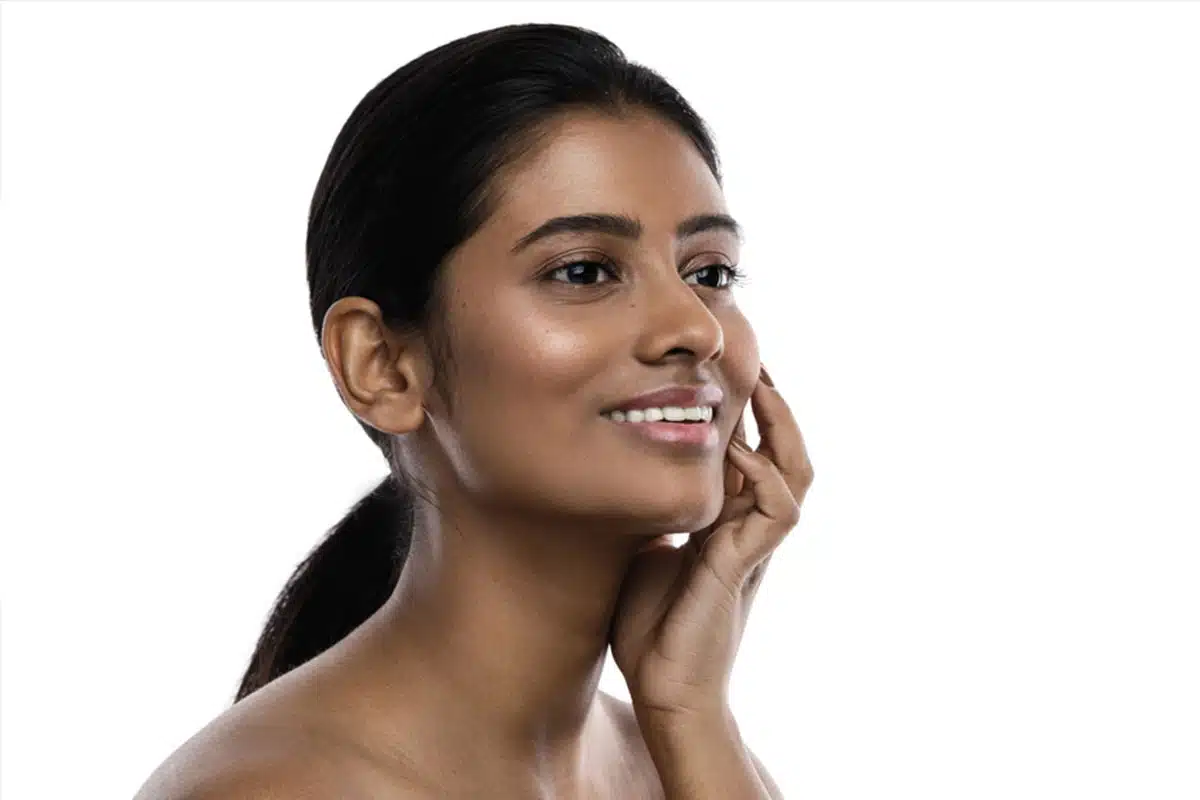Have you considered how unique facial features influence surgical procedures? Indian rhinoplasty requires a nuanced approach to respect the distinct characteristics of Indian noses. Dr. Bustillo, an expert in the field, addresses these nuances through tailored techniques, ensuring outcomes that honor ethnic identity while achieving the desired aesthetic goals.
Understanding the subtle balance between cosmetic enhancement and cultural integrity is paramount. Dr. Bustillo’s mastery of this balance comes from a profound understanding of the diverse anatomical structures and an unwavering commitment to the individual needs of each patient. Dive into a world where art meets individuality in the realm of Indian rhinoplasty.

The Significance of Rhinoplasty in Indian Cultural Aesthetics
Rhinoplasty is crucial in Indian cultural aesthetics as it helps individuals meet their aesthetic goals while respecting their ethnic identity. Those of Indian descent often opt for Indian rhinoplasty to improve their nose shape while maintaining a connection with their cultural heritage.
Surgeons skilled in ethnic rhinoplasties know it’s essential to consider each patient’s unique features and skin type. They focus on enhancing their ethnic appearance in a way that honors their cultural identity and background.
This procedure is about more than looks; it’s about honoring one’s cultural heritage and feeling confident. It’s a reflection of the diverse Indian people and the individual beauty within it.
Specialty Surgical Considerations for the Indian Nose’s Anatomy
Rhinoplasty on Indian noses involves a custom approach due to their unique nasal structure. Indian noses often have thicker skin and softer cartilage compared to Western noses, requiring surgeons with precise skills in refining ethnic nasal structures while keeping cultural features intact.
Indian noses are different from other Asian noses; they may display a hump and have wide nostrils. Ethnic nose surgeries address this by carefully reducing the hump and reshaping the nostrils for a balanced look. The goal is to bring out the patient’s natural beauty while navigating challenges specific to Indian noses, such as broad nostrils and a heavier tip. These modifications are subtle yet significant, ensuring the nasal profile looks natural.
The surgeon must honor the patient’s ethnic identity. This means avoiding generic techniques and instead providing tailored surgical interventions.
Strategy and Methods for Preoperative Indian Rhinoplasty Assessment
A thorough preoperative assessment is critical for Indian rhinoplasty. It’s important to consider the ethnic background as it shapes the aesthetic and structural aspects of ethnic nose jobs. Experienced surgeons focus on the patient’s cosmetic desires and nasal function. The preoperative assessment shapes the rhinoplasty procedure to suit the patient’s specific features.
The following strategies help in the preparation:
- Analyzing nasal anatomy, which includes skin thickness, bone structure, and cartilage strength.
- Checking nasal function to ensure breathing is not affected by changes made.
- Assessing facial balance to ensure the nose fits in naturally with the rest of the face.
Employing these methods can result in a rhinoplasty that looks natural, respects the cultural aesthetic, and improves nasal function.
Innovative Surgical Techniques Customized for Indian Rhinoplasty
Indian rhinoplasty is a distinct kind of ethnic rhinoplasty procedure that focuses on the particular nasal features of Indian patients. It blends respect for ethnic characteristics with an emphasis on maintaining nasal function and aesthetic balance.
Ultrasonic rhinoplasty is a newer approach gaining popularity in Indian rhinoplasty. This technique uses ultrasonic waves to make precise changes to the nose with minimal damage to the surrounding area. It leads to less swelling and quicker healing, allowing for subtle and precise changes.
This method is a step up from traditional rhinoplasty, which could be more invasive and come with a higher risk of complications. Ultrasonic rhinoplasty is especially beneficial for the special considerations in Indian and Asian rhinoplasty.
This customized approach allows surgeons to:
- Adjust the nasal bridge without reducing it too much
- Narrow wide nostrils to fit harmoniously with the rest of the face
- Improve the nose tip while keeping cultural features
These specific adjustments are crucial in Indian rhinoplasty, which requires a careful balance between the surgical technique and aesthetic principles to ensure results honor the Indian heritage.
Mastering Tip Projection and Rotation in Indian Nasal Tip Refinement
Optimal tip projection and rotation are key for successful Indian rhinoplasty, considering the common bulbous nasal tips and their impact on the nasal shape. Customized surgical approaches are vital for a harmonious nose structure.
The focus is to enhance tip projection for a natural look that aligns with the ethnic characteristics. Your doctor will use techniques like cartilage grafting technique or reshaping. Adjusting tip rotation is also critical to match the facial profile.
With closed rhinoplasty techniques, your surgeon will make small incisions for precise tip modification with less scarring. Surgeons should prioritize technique balance to respect the unique features of Indian noses and create a refined contour.
Choices include grafting, suturing methods, and nasal skin redraping to manage tip projection and rotation effectively. Selecting a surgeon skilled in Indian rhinoplasty is crucial for optimal outcomes.
Dorsal Reshaping Strategies for the Indian Nasal Bridge
Dorsal reshaping in Indian rhinoplasty comes with unique challenges, as the nasal bridge widely varies among individuals. The goal is to enhance the nasal bridge’s appearance while respecting the patient’s ethnic characteristics.
For a pronounced nasal hump, dorsal reshaping involves removing bone and cartilage. This defines the profile and maintains the nose’s structure. Flatter noses may need augmentation. Surgeons use the patient’s cartilage or other materials to raise the nasal bridge.
Key points in dorsal reshaping are:
- Reducing the dorsal hump for a smoother look.
- Lifting a flat nasal bridge to define it.
- Shaping the nasal bridge line for balance and proportion.
Rhinoplasty aimed at the Indian nasal bridge must consider the person’s unique face, ensuring that changes enhance their natural features and meet their aesthetic desires.
Optimizing Postoperative Results in Indian Rhinoplasty
Optimizing postoperative results in Indian rhinoplasty is vital right after the cosmetic surgery. Paying attention to the healing process is key. Customized after-surgery care is necessary to lessen swelling and facilitate a smooth recovery. Patients can improve their rhinoplasty recovery with these steps:
- Elevate the head to reduce swelling.
- Apply cold compresses to lessen bruising around the eyes.
- Avoid heavy exercise that might affect the surgical area.
The healing process for Indian rhinoplasty patients is slow, and staying patient is necessary for the best outcome. The cost of rhinoplasty includes the surgery and necessary follow-up care. Sticking to these recovery tips and attending follow-up visits allow for any needed changes and help achieve a good result.
Navigating Cultural Expectations and Surgical Realities in Indian Rhinoplasty
When performing this type of rhinoplasty, surgeons aim to balance a patient’s ethnic heritage with their aesthetic goals. Cultural expectations typically favor noses that reflect the individual’s ethnic identity and match their facial structure.
Understanding the surgical realities of Indian rhinoplasty is important. Different from American rhinoplasty or Hispanic rhinoplasties, Indian patients often have thicker skin and a unique nasal structure. Setting realistic expectations is key, as the goal is to refine while preserving important cultural features.
Surgeons focus on enhancing ethnic characteristics, considering factors such as:
- Keeping the nasal structure connected to the patient’s ethnic heritage
- Addressing specific nasal features of Indian anatomy
- Merging the patient’s aesthetic wishes with feasible surgical outcomes
By respecting both cultural expectations and the surgical realities of Indian rhinoplasty, surgeons can provide satisfying results that honor patients’ identities.
Integrating Non-Surgical Enhancements in Indian Rhinoplasty
Non-surgical enhancements are becoming a significant addition to Indian rhinoplasty, offering an alternative to achieve natural-looking results. Dermal Fillers3 provide shaping that can correct minor flaws, avoiding the recovery time surgical procedures require.
These techniques allow facial plastic surgeons to improve the results of Indian rhinoplasty without removing important cultural features. This is in contrast to Caucasian rhinoplasty, which often seeks greater changes. Non-surgical methods can enhance the nasal shape while maintaining a person’s ethnic characteristics.

Understanding the specific nasal anatomy and the aesthetics associated with Indian features is crucial to successfully combining rhinoplasty and non-surgical enhancements. This less invasive pathway can lead to significant cosmetic enhancement, offering a personalized option for those looking to refine their facial appearance.
Ensuring Surgeon Expertise in Ethnic Indian Rhinoplasty Procedures
Ethnic nose job surgery requires understanding the unique facial features of Indian patients. Rhinoplasty surgeons must combine technical surgical expertise with knowledge of ethnic facial characteristics. This expertise is developed through specialized practice and learning.
A surgeon with extensive experience in ethnic rhinoplasty surgery tackles the aesthetic and functional aspects with care. They consider the harmony between the nose and the face. Such surgeons know that ethnic nose jobs focus on individual enhancement while maintaining ethnic identity.
For this plastic surgery, surgeons need to understand the varied Indian nasal types, which can include thicker skin and distinct nasal bridges and tips. They realize that techniques from Asian rhinoplasty may not apply directly due to different anatomical features.
Patients should choose an ethnic rhinoplasty surgeon with a track record in Indian rhinoplasty. This ensures results that are fitting and culturally appropriate.
Embrace your unique beauty with precision. Indian Rhinoplasty requires a deep understanding of your ethnic characteristics to achieve harmonious results. Entrust your aspirations to Dr. Bustillo, whose expertise in ethnic rhinoplasty ensures outcomes that celebrate your individuality.
Ready to take the next step? Schedule a consultation with Dr. Bustillo today. Let his mastery guide you towards a natural, refined look that respects your heritage and enhances your confidence.

